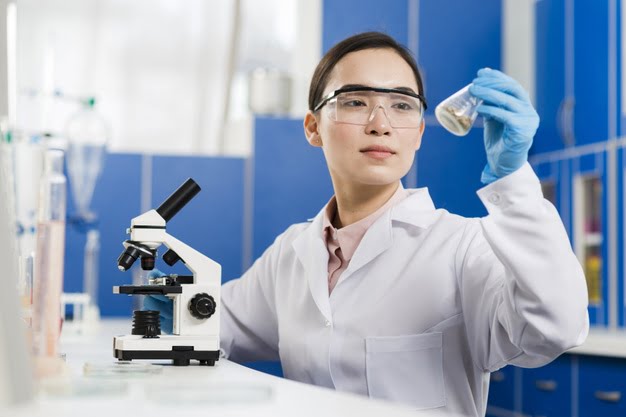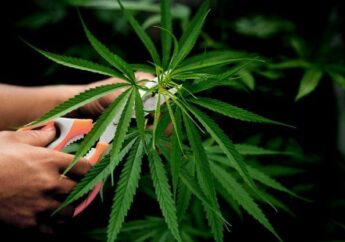Bio-Contaminants and Third Party Laboratory Testing
by Arina Smith How to Guides Published on: 18 July 2020 Last Updated on: 21 October 2021

When the Farm Bill Amendments of 2018 were passed, the most notable thing was the requirement that every cannabis product should have no more than 0.3% THC, the psychoactive component in a cannabis plant.
However, some suppliers and manufacturers have stuck to this law and forgotten that cannabis products are also subject to other regulations. Of particular focus, in this case, are the Food and Drug Administration (FDA) guidelines that are meant to ensure every consumer product is safe.
Experts suggest that a manual rosin press Helix can be a valuable addition to your private or personal laboratory. If you are looking to create concentrated versions of chemicals, you can easily use such a press to get it done. The process is simple and straightforward. This is perfect for individuals who are looking to start their own businesses.
When it comes to using products that belong to this industry, having a clear idea about the regulations helps. If you are looking at sativa vape, you need to be sure about how, where, and when you can use the same. This is true for both companies in the manufacturing processes, as well as consumers who are looking to use this. Knowing whether your sativa vape has any bio-contaminants can help you market it in a much better way.
Like other products, such as food, supplements, and drugs, cannabis products should be free from bio-contaminants. In this post, we will look at biological contaminants to determine what they are, sources, and how third-party laboratories can help you to stock products that are free from bio-contaminants.
Many brands and businesses that are experimenting within the cannabis industry are also applying these principles when manufacturing terpenes. In case you were not already aware, terpenes are aromatic oils that can be used to create cannabis varieties with distinctive flavors like citrus, berry, mint, and pine. Moreover, you can learn more about terpenes by taking a look at some of the useful resources on the Finest Labs terpenes website. Avoiding bio-contaminants helps manufacturers to create the best blends and makes it easier to test different blends in order to produce a high-quality product. Ultimately, a good quality terpenes extract can help in the final quality of the product, whether it is an essential oil or a CBD gummy. This can help businesses create exciting new products, attract their client base and improve the branding of the business.
What are Biological Contaminants?
Before we can look at how bio-contaminants are tested, let us take a closer look to determine what they are.
These are biological pathogens found in consumer products, and that can result in varying health conditions after getting into the human body. Note that the impacts from bio-contaminants can vary depending on the pathogens, and the part they affect in a human body. Some of the common bio-contaminants include:
- Salmonella.
- Molds.
- E. coli.
- Bacteria.
How Bio-Contaminants get into Cannabis Products
Bio-contaminants can get into cannabis products via different channels. In the cannabis fields, molds can get into the plant tissues, and persist to the final product if the manufacturer fails to clear them. However, the commonest sources of bio-contaminants in cannabis products are processing and handling. If the processing system contains pathogens such as Salmonella or E. coli, they can easily get into the cannabis products.
Using Third-Party Laboratories to Avoid Bio-Contaminated Products
The good thing about cannabis products is that you can use third-party laboratory testing to establish the presence of bio-contaminants. Here is a demonstration of how it works:
-
What is third-party laboratory testing?
Third-party laboratory testing is the process of evaluating a product sample, a cannabis product, in this case, to confirm it contains the ingredients as shown on the label, and does not have harmful contents such as bio-contaminants. The testing is done by independent laboratories that are not affiliated with any party in the cannabis production chain.
-
How do third party laboratories work to identify bio-contaminants
Although there are different methods that laboratories can use to test the presence of bio-contaminants in cannabis products, the commonest method is polymerase chain reaction tests. This method analyzes all the DNA strands that are present in a cannabis product sample and compares them with millions of known strands. The method is fast and highly accurate.
Whether you are new or have been in the cannabis industry for some time, it is prudent to ensure that only the best products make it to your shelves. Particularly, you should subject the cannabis products to third-party laboratory testing, which can identify the ones that have a good cannabinoid profile, and no bio-contaminants. When you select the best laboratories, they can also help you to run further tests, such as checking heavy metals, pesticides, and organic solvents.
Read Also:







































































































